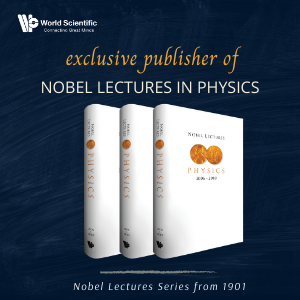System Upgrade on Tue, May 28th, 2024 at 2am (EDT)
Existing users will be able to log into the site and access content. However, E-commerce and registration of new users may not be available for up to 12 hours.For online purchase, please visit us again. Contact us at customercare@wspc.com for any enquiries.
The quest for the unification of fundamental interactions has become the most challenging frontier of sciences in the 21st century. This book presents a detailed analysis and systematic investigation of the foundations of the hyperunified field theory (HUFT) in light of the path integral formulation with the least action principle. Alternative to other unification theories, the starting point of HUFT is initiated from a simple notion that the universe is made of the fundamental building block which is always moving and obeys the basic rule. Such a rule is delved into in this book by proposing the maximum locally entangled-qubits motion principle together with the scaling and gauge invariance principle. These two basic guiding principles are demonstrated to lay the foundations of HUFT, which enable enables us to discuss a series of long-standing fundamental questions, such as: why does the fundamental building block of nature appear as an entangled qubit-spinor field? what brings about the fundamental symmetry of nature? how does the inhomogeneous hyperspin gauge symmetry govern all basic forces? what is the nature of gravity and space–time? how can the space–time dimension and qubit-spinor field be categorized? why do we live in a universe with only four-dimensional space–time? why are there more than one family of leptons and quarks? how does the early universe evolve to be inflationary? what is the nature of dark matter and dark energy?
Foundations of the Hyperunified Field Theory will be of great interest to graduate and senior undergraduate students, junior and senior researchers in theoretical physics, quantum field theory, particle physics, gravitational theory, cosmology, as well as mathematical physics and general physics.
Sample Chapter(s)
Preface
Chapter 1: Introduction
Contents:
- Preface
- Fundamental Building Block and Symmetry:
- Introduction
- Maximum Coherence Motion Principle and Emergence of Spinor Field, Space–Time and Symmetry
- Spinor Field as Local Coherent State of Qubit
- Local Coherent-qubits Motion Postulate and Qubit-spinor Fields as Majorana and Dirac Fermions
- Hyperqubit-spinor Field and Hyperspin Symmetry in Hyper-space–time with Periodic ϱc-spin Charge
- Categorization of Hyperqubit-spinor Field and Hyper-space–time
- String-like Qubit-spinor Field and Self-conjugated Chiral Qubit-spinor Field
- Locally Entangled-qubits Motion Postulate and Inhomogeneous Hyperspin Symmetry of Entangled Hyperqubit-spinor Field as Lepton–Quark States
- Ultra-grand Unified Qubit-spinor Field and Comprehension on Lepton–quark States with One More Family and Universe with 4D Space–time
- Maximum Locally Entangled-qubits Motion Principle and Hyperunified Qubit-spinor Field as Fundamental Building Block with Inhomogeneous Hyperspin Symmetry as Fundamental Symmetry
- Summaries and Conclusions with Remarks
- References
- Fundamental Interaction and Evolving Universe:
- Introduction
- Gauge Invariance Principle and the Gravitational Relativistic Quantum Theory with Inhomogeneous Hyperspin and ϱc-spin Gauge Symmetries
- Hyper-fiber Bundle Structure of Biframe Hyper-space–time and Genesis of Hyper-gravigauge Field with Gravitational Origin of Gauge Symmetry
- Hyperunified Field Theory of Fundamental Building Block and Fundamental Interaction
- Hyperunified Field Theory with Gauge-gravity Correspondence and Dynamics of Fundamental Fields with Conserved Currents
- Conservation Laws and Dynamic Evolution Equation in HUFT
- Hyperunified Field Theory with Gravity-geometry Correspondence and Einstein-Hilbert Type Action with Emergent Symmetry GL(Dh,R) under Flowing Unitary Gauge
- Hyperunified Field Theory with Geometry-gauge Correspondence and Dynamics of Fundamental Fields with Non-commutative Geometry
- Hyperunified Field Theory in GQFT under Entirety Unitary Gauge and Gauge-type/Geometric Gravitational Equations Based on Gauge-Geometry Duality
- Evolution of Early Universe with Nonsingular Background Space–time and Dark Universe with Candidates of Dark Matter and Dark Energy in HUFT
- Symmetry Breaking Mechanism in HUFT and Comprehension on Higgs Boson and Lepton–quark States in SM
- Conclusions and Discussions
- References
- Acknowledgments
- Author Biography
Readership: Graduates and researchers working on theoretical physics, particle physics and/or cosmology.






